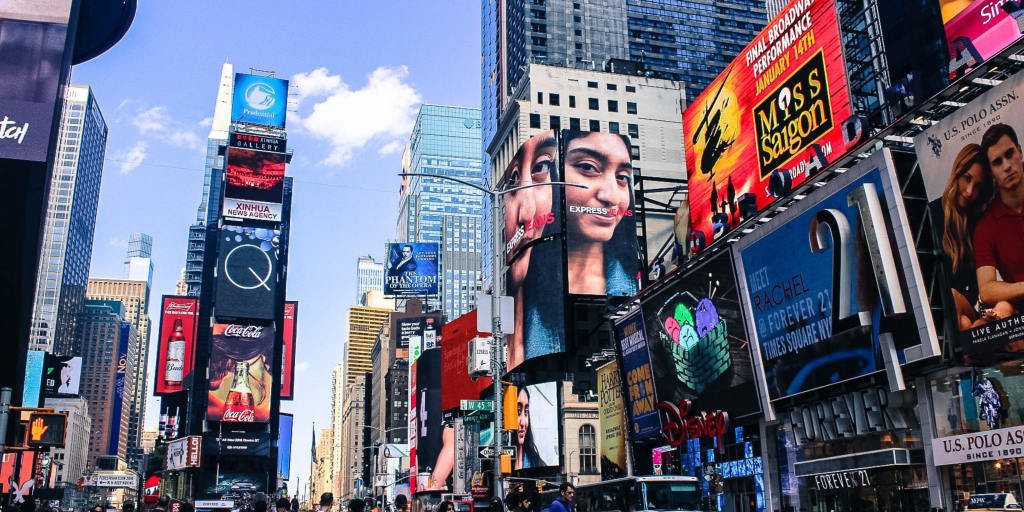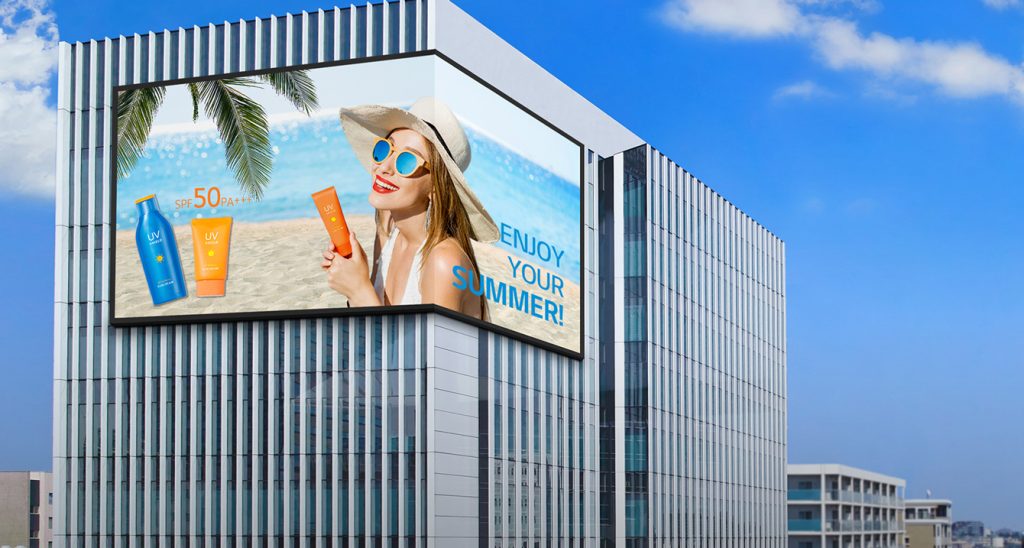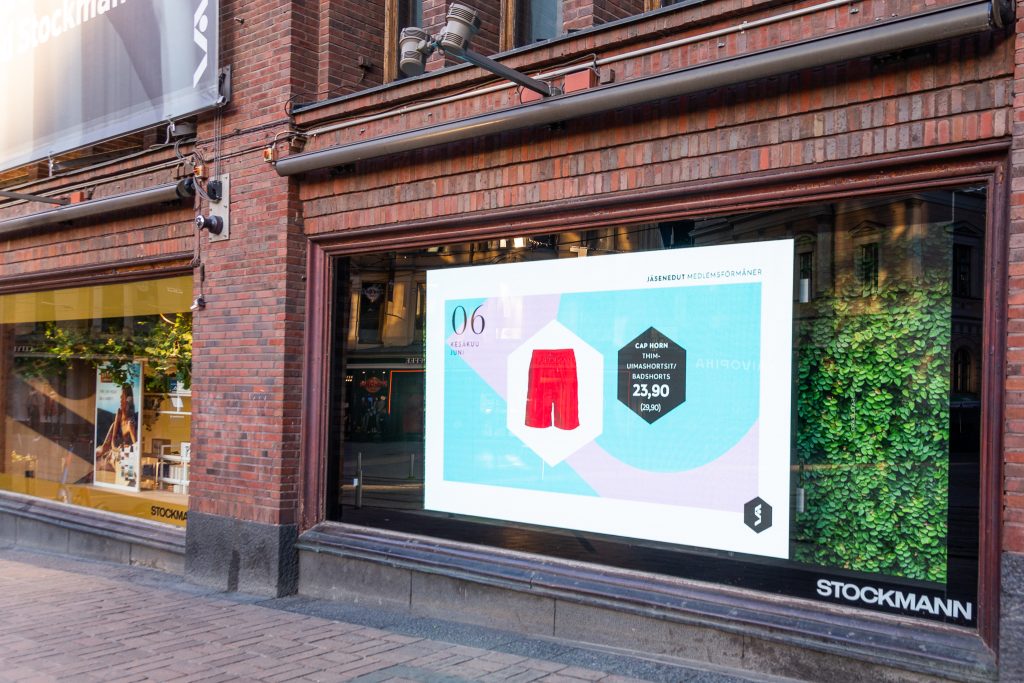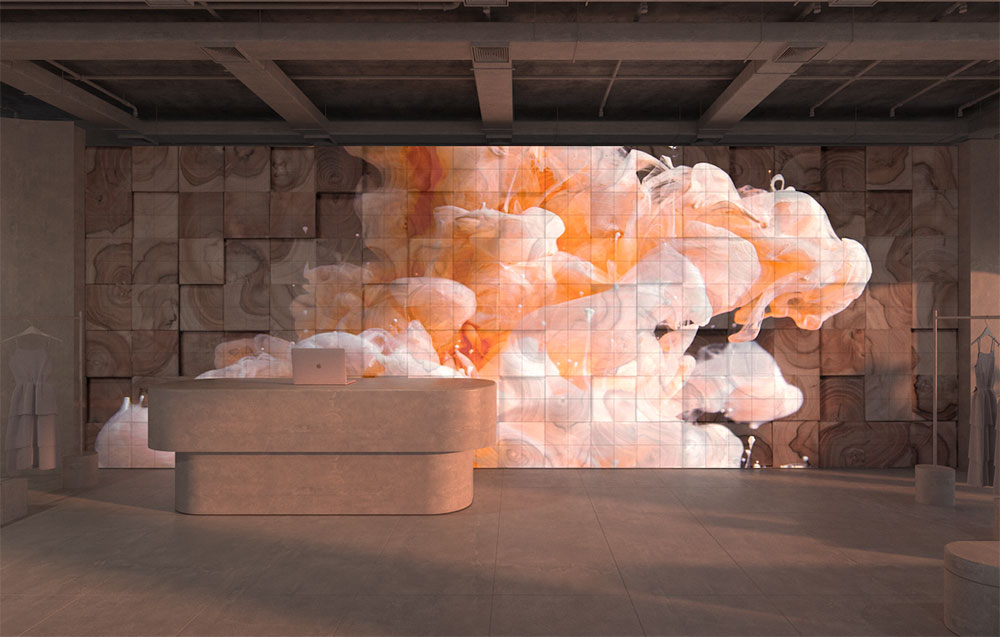
In a dynamic era of technological innovation, the landscape of digital signage is continuously evolving. To gain deeper insights into the role of LED technology and how it is shaping the future of digital signage, we sat down with ZetaDisplay’s Head of LED, Robert Edlund.
In this article, Robert shares his thoughts on the transformative potential of LED advancements and their impact on the future of engaging, immersive digital experiences…
Can you provide insights into the latest advancements in LED screen technology and how they are shaping the future of visual display solutions?
The biggest advancement that we’re seeing suppliers use is ‘COB’ technology – otherwise known as ‘Chip on Board’. This technology involves mounting multiple LED chips directly onto a printed circuit board (PCB) in close proximity. The LEDs are typically densely packed without individual housings, which allows for a higher LED density and improved thermal management.
COB LED displays are known for their enhanced brightness, efficiency, and uniformity of light output, as well as other advantages including reduced power consumption, longer EOL (End of Life) and a much higher sustainability rating. This makes them a popular choice for various applications including signage, lighting, and displays.
Pixel pitch will continue to decrease, allowing the creation of very large screens that can be viewed up close with no loss in resolution. As pixel pitch decreases (meaning pixels are spaced closer together), larger LED displays can be constructed with higher resolution and clarity, even when observed from close distances. This opens doors to innovative applications in urban environments such as retail spaces, stadiums, and other public venues where large-format, high-resolution displays can engage audiences with content.

How do you see the role of LED screens evolving in various industries over the next 5-10 years?
I think the realm of immersive environments and experiential spaces such as immersive rooms will be front runners over the next few years. These rooms, which are often equipped with advanced LED display technology, will play a role in transforming how businesses engage with customers and their audiences.
If we take retail environments for example, immersive rooms powered by LED screens will have the power to revolutionise the shopping experience. Imagine virtual fitting rooms where customers can visualise themselves in different outfits or environments, all displayed in lifelike detail on surrounding LED walls. This technology will not only enhance customer engagement but also drive sales by offering personalised and interactive experiences.
That’s just one industry example, but I think immersive rooms and environments will have a tremendous impact on customer experience and satisfaction across many verticals including entertainment and even the medical field.
The versatility of LEDs will also enable us to advance further with the technology than we’ve ever thought possible. In the past, we were restricted to 16:9 or 9:16 formats but that is not the case anymore. Now, we can go bigger, bolder, and more creative with our ideas. Screens can now create visual ‘illusions’ by wrapping around buildings, pillars, and even corners giving the forced perspective of 3D. This is also a trend with screen transparency – LED Mesh and LED foil that can be glued onto windows are becoming increasingly popular.
These innovations are transforming the way we think about displays, moving beyond traditional flat screens to immersive, dynamic installations that blend seamlessly with architectural elements. This not only enhances the aesthetic appeal but also offers practical benefits for advertising, information dissemination, and artistic expression. The integration of transparent LED technology allows for the creation of stunning visual effects without obstructing the view, making it ideal for retail, hospitality, and public spaces.
The only thing holding us back is gravity, the sky is literally the limit!
What are the key advantages of LED screens compared to other display technologies, and how do you envision these advantages influencing market trends?
LED displays offer numerous advantages over LCD screens. For instance, while LCD screens typically last around 3-4 years, LED screens have the potential to last up to 8 years or more. They are considerably more durable than other screen types and are easier to repair in the field. Additionally, LED displays can be scaled to much larger sizes and modular formats without sacrificing resolution, making expansive digital out-of-home (DOOH) and large window displays more feasible. LED screens also boast sharper resolution, resulting in higher brightness and crisper visuals.
LED screens are also much more environmentally sustainable. They feature intuitive technology that automatically powers down when not in use, reducing power consumption. They can also be programmed to adjust brightness based on natural lighting conditions, optimising energy efficiency throughout the day.
Given their durability and ability to withstand outdoor conditions, I envision more businesses leaning towards investing in DOOH advertising and outdoor display solutions in the future. The longevity, resilience, and eco-friendly features of LED screens make them an attractive choice for forward-thinking businesses looking to enhance their visual communication and advertising strategies.

Are there any challenges or limitations currently facing the widespread adoption of LED screens, and how do you anticipate these challenges being addressed in the future?
To be honest there aren’t many limitations when it comes to LED technology now, in terms of the technology itself. It has advanced so much over the years and is capable of so many possibilities that we perhaps might not have thought possible 10-15 years ago.
The main thing I see being an issue is current laws around DOOH screen use. In Norway you are not allowed to place any display screens facing the roads as these can cause distractions for drivers. However, you can apply for a dispensation. This is partly in place to ensure that normal high streets don’t turn into Times Square! These can feel like too much ‘visual litter’ and take focus away from the good content that is being generated.

How are advancements in LED screen technology influencing content creation and delivery?
Recent technological advancements have transformed LED screens by introducing innovative textural covers, such as wooden, marble, or glass finishes, instead of traditional black screens. This evolution is revolutionising content delivery to audiences, as it enhances the aesthetic appeal and versatility of LED displays. Creating more of an aesthetic when the screens are not in use – this becomes much more interesting to the viewer than seeing a blank screen.
ArtMorph, a pioneering company in this field, is leading the way with its cutting-edge technology. Their panels boast an impressive resolution of 80 x 80 pixels per panel, captivating viewers with stunning clarity and razor-sharp brilliance. The use of high-quality LED technology ensures vibrant and dynamic colours, enabling seamless transitions between different tones and enhancing the overall visual experience.
This new approach to LED screens not only elevates the visual impact of content but also expands the creative possibilities for designers and advertisers. By integrating texture and visual appeal into LED displays, ArtMorph, and similar innovators are shaping the future of digital signage, offering captivating solutions that engage audiences in exciting new ways.
